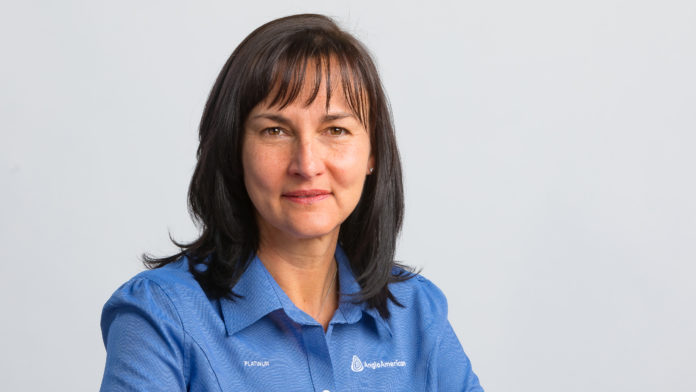
ANGLO American Platinum (Amplats) has targeted a one-fifth increase in attributable platinum group metals (PGMs) production to 3.6 million ounces annually by 2030 by which time its portfolio would consist only of mechanised and modernised mines.
The increase in production is a sign of growing confidence in supply deficit forecasts for PGMs, palladium and rhodium especially, as well as platinum which is expected to form a market deficit next year.
Last week, Sibanye-Stillwater announced R6.8bn worth of new PGM projects which would add 250,000 oz in production in the next two years.
Natascha Viljoen, who will be 12 months into the job as CEO of Amplats in April, said the company had “a strong platform for growth”, adding that it owned “… diverse, low cost, and long-life mining and processing assets”.
As a result of its expansion ambitions, Amplats will increase total capital expenditure (stay in business plus expansionary capital) from the R10bn to R11bn forecast for this year to R12bn for the 2022 and 2023 financial years, potentially increasing to R13bn and R23bn thereafter.
The wide forecast range in capital expenditure in the later years is owing to options Amplats has regarding its Mogalakwena expansion. Currently an open pit mine, Mogalakwena has “a real opportunity of going underground,” said Viljoen in an interview today. A consideration in this respect is whether to risk the ‘ESG impacts’ of developing “a mega-pit” by continuing to mine Mogalakwena’s open pit.
Another major consideration in the capital expenditure estimate is the addition of a third concentrator at Mogalakwena. Viljoen said that based on present understanding, there would be a gradual, modular build-out approach with a third concentrator.
As Amplats had announced a mechanisation and modernisation of its mines, there were no plans to sell or close Amandelbult, an operation in the portfolio that still operates as a conventional, labour-intensive mine. “Not unless we get an absolutely amazing offer for the mine,” said Craig Miller, CFO of Amplats.
Amplats is, however, conducting a sale process for its stake in Bokoni Platinum Mines which it holds with Atlatsa Resources, its former empowerment partner. Miller said the sale ought to be concluded in the current financial year.
There were no plans to expand the group’s Zimbabwean footprint where there will be a marginal production increase owing to debottlenecking processes at is Unki mine. “We would love Zimbabwe to be higher,” said Viljoen of Unki’s future contribution to group production, but the country’s political risks were too high.
Amplats attributable production in the 2020 financial year – in which the group increased the full-year dividend 65% to R45.58/share – totalled about three million oz. A final dividend of R35.35/share was announced – equal to R9.4bn – reflective of the firm’s 40% of headline earnings payout policy.
The 2020 financial year was a difficult period for Amplats largely owing to the shutdown of its processing unit in Rustenburg which kept sales of refined metal to about 2.7 million oz, a year-on-year decline of 42% at a cost of R12.8bn to earnings before interest, tax, depreciation, and amortisation (EBITDA).
Nonetheless, a 71% increase in the average rand price for the PGM basket of metals helped Amplats to a 64% improvement in basic earnings of just over R30bn. Net cash increased 8% or R1.4bn to end as of December 31 at R18.7bn.
“We are committed to disciplined capital allocation and continued our base dividend pay-out of 40% of headline earnings,” said Viljoen. “I am excited about the impact we will make and the value we will return to stakeholders in our purpose-led journey,” she said.
It would take about 24 months to roll out the capital build-up associated with the downtime of Amplats’ processing facilities, said Miller.
For the 2021 financial year, Amplats has targeted PGM concentrate production of between 4.2 to 4.6 million oz and refined production and sales of 4.6 to five million oz. Mining EBTDA margin of 35% to 45% had been targeted and a return on capital employed of 25% through the cycle. Carbon neutrality in respect of Scope 1 and 2 criteria had been set for 2040 with a 30% carbon emissions reduction for 2030.









